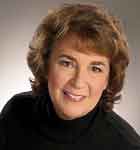MA plans face further cuts, more quality expectations
One of the main revenue-raising provisions in health reform legislation is to revise methods for calculating payments to Medicare Advantage (MA) plans.

Even if Congress fails to act, a Medicare advisory group continues to press for similar revisions in the MA payment structure. Medicare bills enacted in 2003 and 2008 made some changes to the MA rate formula, which cut MA payments by 4% to 5% for 2010. These policies have led to higher premiums for MA plans and are likely to erode participation in such plans.
Analysts have been criticizing the MA program for being more costly than the fee-for-service (FFS) program. MA payments per enrollee this year are 9% higher than for a comparable FFS beneficiary, according to the Medicare Payment Advisory Commission (MedPAC). Some of that extra money supports enhanced benefits for MA plan enrollees, which has made the program increasingly popular: nearly 11 million seniors enrolled in MA plans in 2009, and plans are available throughout most of the country.
MedPAC continues to press for "financial neutrality" between private MA plans and Medicare FFS, a recommendation it has made for the past five years. At the same time, the advisory panel supports higher payments to those plans that provide higher quality care. To promote a broader Medicare pay-for-performance approach, MedPAC seeks a system that can compare quality of care for all MA plans and FFS.
To do this, CMS needs to calculate a spectrum of clinical measures for the FFS program, along with standards for electronic health records that allow the collection of comparable patient data and quality measures. In addition, MA preferred provider organizations and PFFS plans would have to report on the same performance measures as do HMO-type plans. The aim is to create a level playing field for quality reporting and to help beneficiaries make informed choices among coverage options.
MA-PD PREMIUMS UP 14%
One result of rate cuts that have already been imposed on MA plans is a notable increase in premiums charged seniors. Private Medicare plans that offer both medical and drug benefits increased premiums 14% in 2010 on average, compared to a 5.2% increase from 2008 to 2009, according to a recent report from Avalere Health. The rate hikes are greatest for PFFS plans-up more than 30%-while HMOs are increasing premiums only 11%.
"Premiums are going up not just in the individual market but also for Medicare Advantage products," says Lindsey Spindle, Avalere vice president. In addition to dealing with Medicare rate cuts, insurers also have to contend with rising healthcare costs, as seen in Congressional action to postpone a proposed 21% cut in Medicare payments for physicians.
Jill Wechsler, a veteran reporter, has been covering Capitol Hill since 1994.
In this episode of the "Meet the Board" podcast series, Briana Contreras, Managed Healthcare Executive editor, speaks with Ateev Mehrotra, a member of the MHE editorial advisory board and a professor of healthcare policy and medicine at Harvard Medical School. Mehtrotra is also a hospitalist at the Beth Israel Deaconess Medical Center in Boston. In the discussion, Contreras gets to know Mehrotra more on a personal level and picks his brain on some of his research interests including telehealth, alternative payment models and price transparency.
Listen